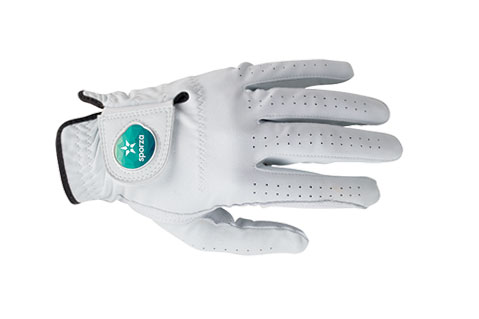February 20, 2017
Promo Market to Target: Golf Tournaments
Land big sales and earn exposure to dozens of high-value prospects with these great tips.
The charity golf tournament has historically been a bastion of promotional opportunities, but in recent years the golf industry has been hitting out of a bunker. In the last five years, there have been 6% fewer participants, according to the National Golf Foundation. The sport is also having trouble attracting younger players.

Phil Immordino, president of Golf Tournament Association of America (GTAA), says during the economic downturn, the number of tournaments and outings in the U.S. plunged to 600,000. “In the good ol’ days, there were as many as one million,” he says.
>>Top 10 tips for networking on the golf course
Fortunately, that number is on the upswing to about 800,000 outings, of which 90% are charity outings, says Immordino. And, despite the recent decline, over 24 million Americans play the sport.
“Over the past five years, golf fundraising has been a growing part of our business,” says Tim Hanson, president of Ball Pro (asi/38120), which offers a free guide to planning golf tournaments and provides webinars and counseling free of charge. “We’ve invested a lot of resources into it, because it’s a passion of ours to help others give back.”
There’s a reason for the popularity of charity golf tournaments: They’re a massive draw to players who love the sport and enjoy a day on the green; they provide excellent exposure to sponsors; and, of course, it all goes to a good cause. “Not only are charity golf events extremely important from a business and financial perspective, but they’re also emotionally and professionally rewarding because they’re raising funds for a wide range of causes,” says Derek R. Haskins, president and co-founder, ELITE PROMO INC (asi/186730), formerly ELITE Golf & Promotional Group.
Reps who master their golf planning game will earn steady sales every year through the spring and summer. It’s also a tremendous driver of business, allowing distributors to not only impress the organizers, but also become familiar with the sponsors and players at the event.
Ron Muzechuk, owner of Proforma CNR Marketing (asi/300094), focuses on the top six major outings that will expose him to the most future opportunities, and supports his customers’ outings as well. The Dayton, OH-based distributor was in charge of the Ronald McDonald House charity outings for six years, which raised an average of $75,000 for each outing. In addition to selling product, Muzechuk participates by sponsoring a team and inviting other customers to play. He recommends buying a hole, a sign or volunteering at the outing. “Be involved with the event – don’t just sell to it!” he says.
That attitude helped him land his biggest client. He was helping another customer, a mortgage company, sponsor a celebrity charity golf outing by creating signage, printed programs and registration gifts. The connections he made through this event directly impacted his business. “That celebrity outing,” he says, “was the mother lode for me.”
Big sales through golf tournaments can be par for the course – so long as you follow these proven strategies.
Golf Gifts & Giveaways
“The importance of promotional items to charity tournaments cannot and should not be overstated,” says Haskins. “Budgets vary, but having helped manage nearly 50 outings since our inception in 2009, our advice even before we got into the promo side of the business was not to skimp on promotional items and giveaways.”
Gifts and prizes are key to golf events, and in fact, are the reason many people play in events and return again the following year, says Immordino. It’s so important, the GTAA offers product showcases for its members throughout the year at its seminars, as well as an annual conference in Orlando for its consultants, where vendors display products.
“If gifts are done right, they don’t cost the event anything – they actually make money for the event,” says Ball Pro’s Hanson. Take items like the Scramble Pic, a rod that picks up the extra golf balls for the group playing in a scramble golf outing. “The value is advertising space: 20 logos can fit on it, with each sponsor paying for placement,” Hanson says. The item sells for $20, “but you can easily get $50 worth of sponsors on each stick.”
John Parker was formerly a golf tournament planner, but as he began working with nonprofits and event planners with corporate and philanthropic interests beyond golf, he expanded his focus. The president of Parker Promotions suggests these four primary selling opportunities:
1. Tee Gifts: These are participation gifts that are given to each golfer at registration. “Hopefully the sponsor pays,” says Parker. “The gift should encourage the participant to want to come back the next year. The higher the entry fee, the better the gift should be.”
2. Winner’s Gifts: In charity events, most play in teams of four. Gifts are presented to first-, second- and third-place finishers, he explains. For higher-end tournaments, he recommends a nice crystal gift, like a clock or trophy that will be kept and displayed. “These awards help bring people back – they’re motivation to participate,” says Parker.
3. Sponsor Awards: Parker says these may be the most important items. They can be crystal or utilitarian, and they don’t have to be golf-themed – for example, branded Sherpa blankets for individual sponsors. If the sponsor is corporate, he recommends a plaque or award that can be displayed on the walls of the office to demonstrate its commitment to charity.
4. Volunteer Gifts: “The volunteers work hard, and you want them to come back too,” says Parker. T-shirts are common choices, but food or wine could also be a good choice, depending on the budget.
No matter the use, be sure to sell items that have high perceived value to match the exclusive feel of the tournaments. Oftentimes those are brand-name items, and there are a bevy of suppliers who offer products from the biggest brands. But great suppliers also offer more. At Gold Bond Inc. (asi/57653), where golf and golf-related events represent about 20% of its overall business, the supplier will even run a tournament if the client requests it. On-site golf fittings are also tremendous differentiators. “Fittings are a huge part of our department and is what makes us different,” says Ryan Cox, the company’s director of golf. Most popular are Nike and Footjoy shoe fittings, Tifosi sunglasses, Callaway and Nike gloves, as well as golf bag fittings. Gold Bond also offers club fittings from Callaway and TaylorMade.
Parker Promotions’ golf glove fitting booth at a charity tournament was a hands-down success. As Parker personally fitted each golfer with a glove (branded with the sponsor’s name and logo), the sponsor thanked them and shook their hand. “Every golfer loved it,” he says. “It was very custom, with a personal touch, and they were thrilled and surprised that it was free.”
Be sure to avoid the mindset of only providing golf products. Hit Promotional Products (asi/61125) doesn’t offer a large category of actual golf items, yet “golf itself is a big category for us as it relates to a lot of product we sell,” says Pete Strob, key accounts manager. Can coolers, tumblers and stainless-steel bottles, sunglasses, folding chairs, umbrellas, sport packs and more are all Hit top sellers favored by tournaments. Tech products also have a place on the course. “Given the length of time spent on the golf course – minimum four hours – what better way to save the day than with a power bank for your phone, or a Bluetooth speaker to play music?” Strob says.
One way to tie everything together (and raise money) is through a kit. Ball Pro’s planning guide suggests selling different sponsorships for each item in the kit, and points out that some items can contain multiple logos for added revenue.
Lastly, find creative ways to incorporate products into the tournament. Poker chip ball markers have been “the craze” in the past five years, says Hanson. They’re inexpensive and can be used as invitations, drink tokens and special contests, he says. Ball Pro offers a peel-off version that can be used for silent auctions, and the company is introducing “MarkerMate” this year, which has a spinning ball marker and allows for two sponsors.
Expert Advice
To be clear, products are just the start. “With golf outings, you can just be a provider of the products. Or, you can get involved in advice, counsel, and become part of the crew that organizes the outing,” says Matt Middaugh, president of Bright Ideas in Broad Ripple (asi/146060). This way, you lock in the business for the long haul and get to know the other companies participating in the event, he says.
How to begin? Go to any nonprofit and start with the development director to find out what events they are planning, suggests Proforma’s Muzechuk. Another option can be reaching out to the event planner at a golf club and presenting yourself as a resource, says Chris Piper, VP of customer success for Boundless (asi/143717), who is also a speaker, trainer and consultant. “Pitch both contest ideas as well as products,” he says. “Fun contests, a professional feel and a great atmosphere are what players will remember when deciding which tournaments to attend each year.” Popular contest choices include Longest Drive, Closest to the Pin and Hole-in-One. Your contest prizes also need to measure up. “Go big or go home with the hole-in-one prize – an iPad won’t cut it,” says Piper. He suggests a branded bicycle – it offers great visibility and is functional in a fun way. Ancillary items like a messenger bag and branded reflectives can be great accompaniments.
Don’t be afraid to dream up more unique contests. Hit the Green, for example, features four golf cups on the hole. Players are encouraged to donate anywhere from $20-$200. If the player birdies the hole, they double their money, if not, the money is a donation. If everyone donates, that team gets a hole-in-one, Piper says. Make sure to offer both a men’s and women’s competition, he says, and offer gender-neutral prizes in each category.
Such creative conception and hands-on management will increase what you can charge. “Put a line item in your proposal for project management – a fee for creative consultation,” Piper says. It can either be a retainer or a calculated number of hours, but it’s “a way to qualify your self-worth and value and anchors you with the customer,” he says.
Hanson says a typical charity golf outing has about 80 golfers and raises $5,000. That isn’t a lot of money because golf planners don’t take the proper approach. “People think the proceeds come from the golfers when in fact, if done correctly, the money comes from sponsors,” Hanson says.
Ball Pro’s “Golf Tournament Planner” gives instructions on how to raise that number to $46,000 using the same amount of work as those who raise $5,000, says Hanson. Many larger events can generate $300,000 or more, according to the Planner, which offers step-by-step tips and a timetable for planning and hosting a successful tournament, as well as fundraising ideas, budget samples and other important advice.v
Gold Bond also offers a planner and willingly educates distributors. “People are willing to donate money; be creative with how you ask,” reads the company’s planner. The supplier recommends asking the following budgeting questions: How much do you want to raise? What type of player do you want to attract? Which golf is appropriate for your event? How much will your players be willing to pay? Are you offering enough value to achieve these goals?
Golf Reconsidered
Does golf have a place with millennials? The sport has wrestled with that fact for a number of years. Nearly 30% of U.S. golfers are millennials (which matches their proportion of the U.S. population), but only 6% of the spending on the sport comes from that generation. Critics contend that golf is too costly, time-consuming and exclusive to appeal to Gen Y.

Accordingly, new variations of golf are emerging. Night Golf (which uses glow-in-the-dark balls as well as light-up equipment and markers) and Top Golf (think bowling meets golf) features things millennials love – music, technology, food, alcohol and a relaxed dress code. A game only takes a couple of hours and requires little to no skill. The same sort of inventiveness can be applied to charity tournaments. “I’m a bit of a crusader in the fight against the nine-hour corporate tourney. I think there’s still a place for tournaments, but they need to evolve,” says Scott McLaren, an avid golfer and president of Ontario-based Festival Promotions (asi/193462).
In this spirit, he created and organized a charity golf outing, called MOpen Championship – in support of Movember – that was designed to be “the exact opposite of the long, monotonous golf tournament.” He limited speakers to five minutes, offered a buffet dinner instead of a lengthy sit-down meal, and created a sponsor wall (as typically seen at player press conferences) where participants could post photos to social media. Most important, he reduced the amount of shots a team played over the course of a day. The outing featured 10-12 unique “challenge” holes that were based on the sponsor and meant to pick up the pace. Example: An Air Canada “Take Off” hole where a player was dropped after each shot, so only one player remained to the finish.
“By creating all these challenge holes, you’re creating unique branding opportunities for each hole and sponsor, and possibly connecting with the marketing people of 12-18 more companies than just the initial organizers,” says McLaren, noting that including speeches and prizes, the tournament clocked in under six hours.
Jean Erickson is a contributing writer for Advantages.

